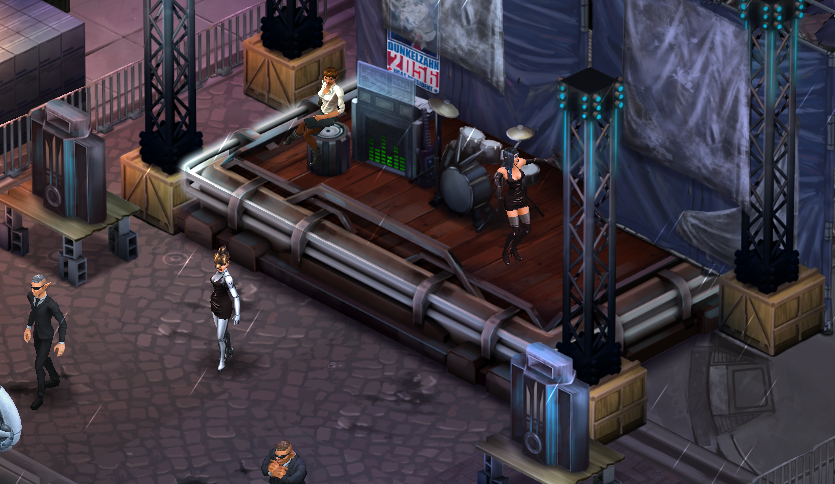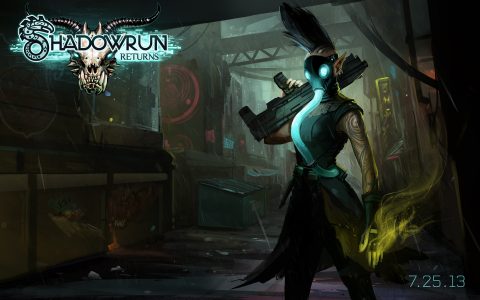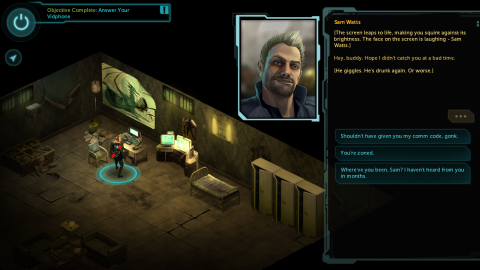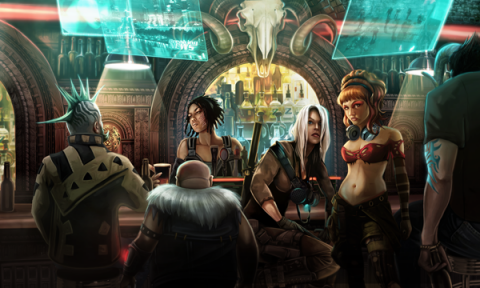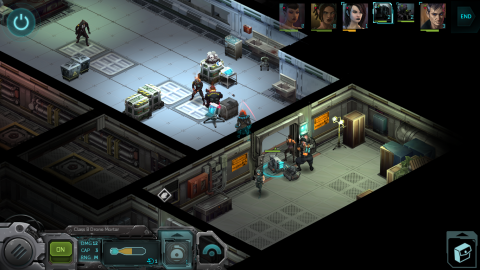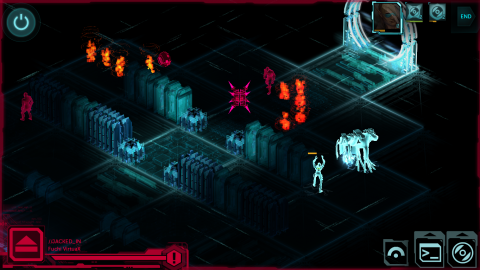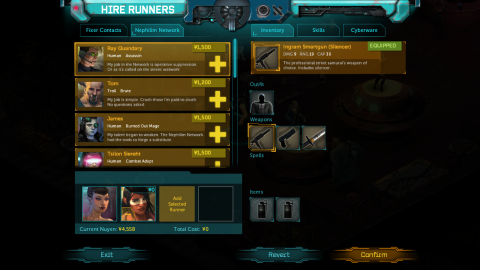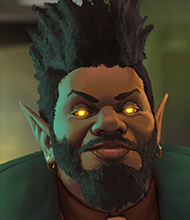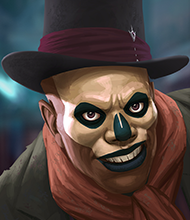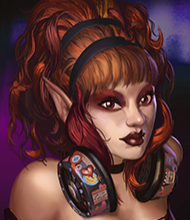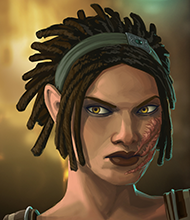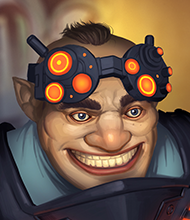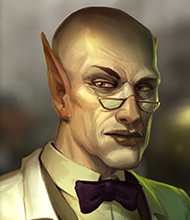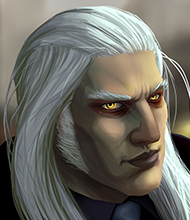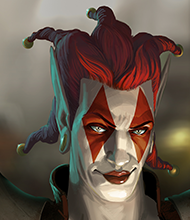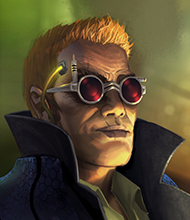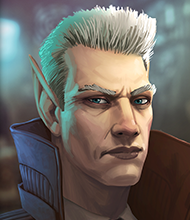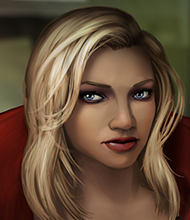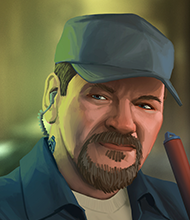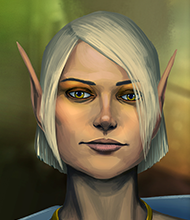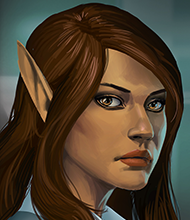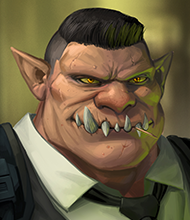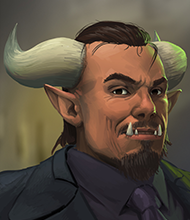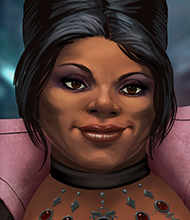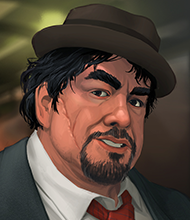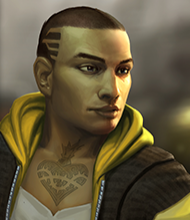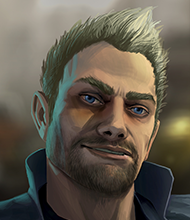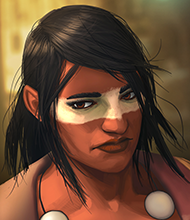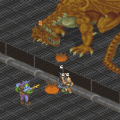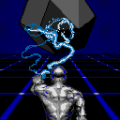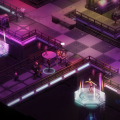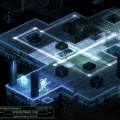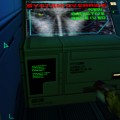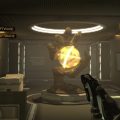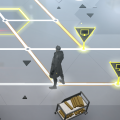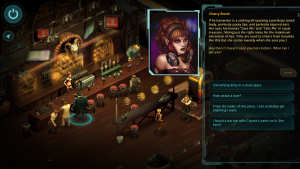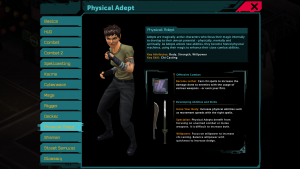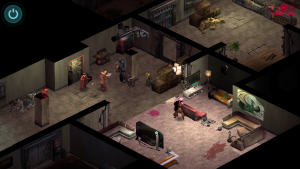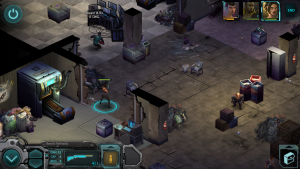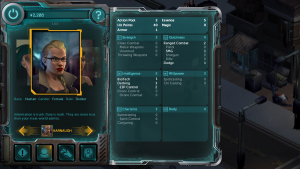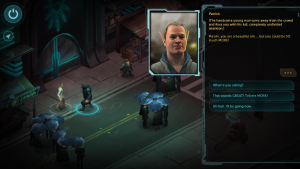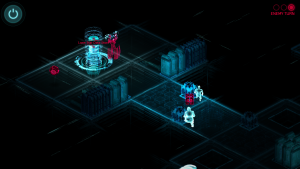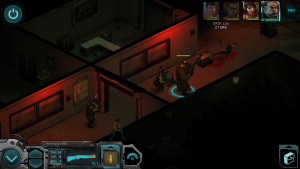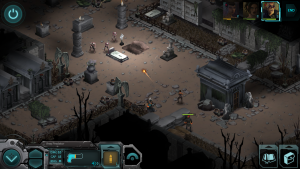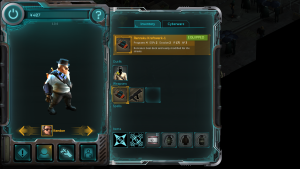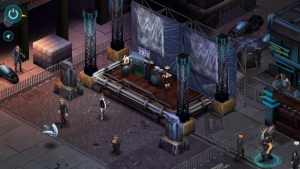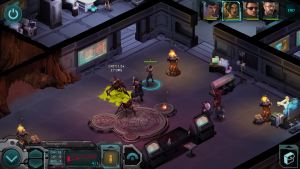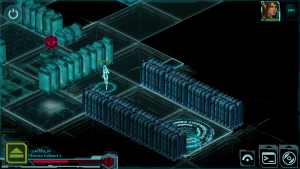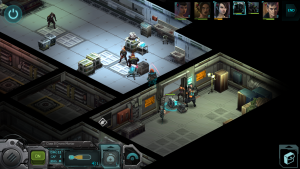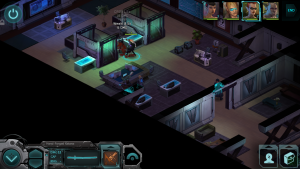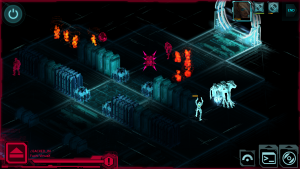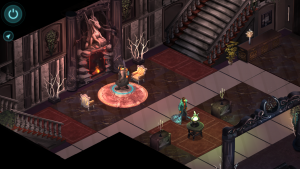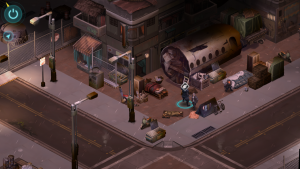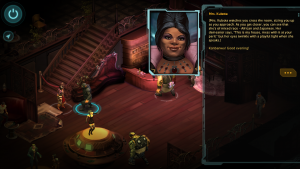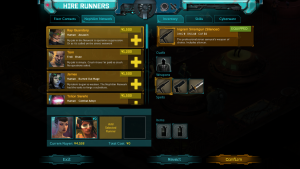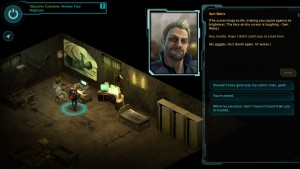Things weren’t looking good for the Shadowrun video game line. Soon after the release of the first-person shooter that had alienated fans of both the pen-and-paper original and the older 16-bit console games, Microsoft shut down FASA Studio. FASA Co-founder Jordan Weisman was quick to acquire licenses for all of the developer’s franchises (which also included MechWarrior and Crimson Skies), but for a long time not much seemed to happen with Shadowrun. That is, not until Kickstarter became a mainstream option to fund medium budget games. Weisman and his company Harebrained Schemes promised a return to old virtues, and little more than a year after a funding campaign that exceeded its goal by more than four times, it became one of the first high profile Kickstarter games to actually deliver. But was it worth the wait (and the funding money)?
For the first time in a Shadowrun computer title, there is no predefined protagonist. Instead the player gets to create the main character from the ground up. There are six different classes. In addition to the well-known Street Samurai, Deckers and Shamans, there are Riggers who command a range of support drones in combat, melee-focused Adepts and Mages. Mages differ from Shamans not only in the spells they use – but also in an unique aversion against cyberware. They can get body modifications, but then their magic is significantly weakened. Most of their spells are more immediately offensive than the Shamans’, who in turn get to summon elementals from small specks of nature in the environment. All the typical races – humans, elves, dwarves, orcs and trolls – are also available.
While all of the class starting values can eventually be overcome, races have a definite limitation on certain skills – trolls can never be as fast as elves, but can boost their endurance higher than any other race, for example. As usual, there is no traditional experience and level up system, instead Karma points are once again awarded for fulfilling certain tasks, that are then directly traded in for skill levels.
Regardless of class, race or sex, the protagonist is introduced as a downtrodden, penniless Shadowrunner, who is contacted by an old companion named James Watts, who asks to find and take revenge on his own murderer – his message was triggered by “The Dead Man’s Switch.” Foreseeing his death, the good-for-nothing drunk has not only prepared this message from the grave, but also a surprisingly princely financial reward, giving players the opportunity to state in every other dialog whether they’re in it for revenge, justice or money. The scene of the crime is as usual Seattle, and upon arrival the protagonist finds out that Sam was killed by an infamous serial killer called the Emerald City Ripper, for his habit of surgically removing an organ from each victim. A suspenseful investigation ensues, where the hero has to interrogate possible witnesses, deal with the local Lone Star infighting, and of course gets entangled in several Shadowruns.
One of the first leads is the Seamstress Union, the bar Sam Watts used to frequent during the final months of his life. The establishment run by the half-Japanese, half-black Mrs. Kubota is more than just a mere night club, though: “Seamstress Union” used to be a cover-up name from a time prostitution was illegal, but somehow the name got associated with another secret trade: The building houses a secret operation base for Shadowrunners. For the course of the adventure, the player becomes a temporary member of this strange family, which consists of some of the most colorful characters in the game: There is the huge but peaceful troll bouncer Mr. Kluwe, the sexy elf bartender Cherry Bomb, the inconspicuous “janitor” Johnny Clean, and emergency surgeon Dr. Sarah Castle, who is also a shaman and always has a small elemental sitting on her shoulder. One of the first missions involves helping the other, missing bartender Coyote out of a very precarious tight spot, who then turns to a life of running the shadows and becomes available as a mercenary later.
Much of the game is played in adventure mode, where the protagonist has to run around finding evidence and interrogating NPCs by choosing dialog lines. Sometimes getting their support requires running all kinds of errands for them, occasionally even some kind of puzzle blocks the way. While most skills in the game are related to combat, a high physical strength may also go a long way in intimidating people, or charisma may be used for more gentle persuasion. Every two charisma points unlock a new style of “etiquette,” which allows the Shadowrunner to talk shop in various categories, be it corporate knowledge, street wisdom or security savvyness. Often there is more than one solution to any particular problem, so having any particular build doesn’t result in getting stuck. (There is one chapter where it may become necessary to restart the area when fumbling the answers in one certain dialog and running out of bribe money at the same time, though.) The writing is almost uniformly good, but even much more dank and depressing than any of the 16-bit games. Shadowrun Returns leaves no doubt that the world has gone to shits utterly and almost irredeemably. It’s a world full of hopeless drug addicts, abused mental patients and many more destroyed lives of all kind.
Combat is much, much better than the dull system on the SNES or the hectic mess on the Genesis. It uses a tactical turn-based system that should feel familiar to anyone who has played the recent X-Com reboot: every character gets a limited number of moves per round (two at the beginning, three later in the game), and every point allows for one action, either moving within a certain range or using a weapon or skill. Some more advanced attacks like grenades or spells may require more than one action point, while there are also means to make the characters move faster. Melee attacks cause the opponent to get stunned for one or more action points. The system takes account for range, cover, shotgun spread, and a number of other parameters, so at least in theory the tactical options are plentiful.
During the first few missions the hero is accompanied by pre-set acquaintances, but as the game goes on, it becomes increasingly important to hire professionals for support. There is a wide range of available Shadowrunners, although unfortunately none of them have any kind of personality, only skills, equipment and a mugshot. Some human component like in the Jagged Alliance games could have made their existence more engaging. For once in an RPG the economy actually makes a speck of sense, and less cunning businessmen will often find themselves confronted with the choice to either invest in better equipment or a more skilled squad.
The Seamstress Union functions as a hub for the protagonist’s operations, and in the back room all kinds of stores are available. Aside from shopping opportunities for weapons, armor, magic, drones and Matrix programs, this also is the game’s sole source for Cyberware enhancements. Unfortunately, this most cool aspect of the pen-and-paper game is decidedly underwhelming in Shadowrun Returns. The modifications are mostly very subtle stat improvements, with only the shiny metal arms actually showing up on the character model. There are separate cyberware slots for each arm and leg, as well as the eyes, skull and torso, but their application is severely limited by their “essence” requirements.
The Matrix on the other hand got its most involved treatment in a video game yet, although at the same time it might seem slightly disappointing that it uses the same general system as normal combat. The Decker (or Deckers – it’s also possible to go in with multiple characters if there is more than one terminal around) can execute programs, which work the same as spells in the normal world, or create ICs, which are the cyberspace equivalent of drones. Even the perceived time difference is taken care of, although not in the same scope as the pen-and-paper original: Every combat round in the real world is equivalent to three rounds in the Matrix. The Decker is defenseless against physical enemies for the duration, though, which allows for suspenseful scenarios where the rest of the team has to fend off attackers, while the Decker works his magic on the web.
Shadowrun Returns pays big tribute to the SNES game. This is not only evident in the same isometric perspective, but the general atmosphere is very similar, and the search for the Ripper leads to a few locations that seem vaguely familiar, like the cemetery or the docks. The engine has a neat pseudo-3D effect for rooftops and other elevated structures, although that can be switched off in favor of purely flat 2D. The characters are all polygonal 3D models, though, and not very good-looking at that – the models fulfill their purpose, but they are hardly more detailed than in the ten years older Neverwinter Nights. Most characters have big mugshots in the dialog window, though. (Many of the minor ones were modeled after kickstarter backers.)
But the links to the SNES Shadowrun don’t end with the graphics: Fans of the 16-bit game will be delighted at the reunion with Jake Armitage and several allusions to his former adventures. The dark and moody music mostly just lingers around, but during combat there can be heard a few more melodic notes that even sample the first game’s soundtrack.
The odd thing with Shadowrun Returns is, while it’s certainly the most faithful adaption of the pen-and-aper game yet, it’s also almost the most linear one (except for the Mega CD digital novel). The game even calls its areas “levels,” and that’s not a joke: There’s almost always only one area accessible at a time. It’s possible to do a few small side quests here and there, but moving on to the next area usually means abandoning the current one forever. Only the Seamstresses Union is frequently revisited, but only when the plot demands it. The game autosaves every time a new area is entered, quicksaving in between is not possible. This is often annoying, because one never knows how long it takes until the next one. At least the game keeps track of all the save states and allows to rewind the game to any previous position.
At times the official campaign also feels a bit insubstantial. The mystery is intriguing at first, but around the middle part the solution of it all just ends up seeming trivial, and it seems to be going all too well. There is a twist after that, but the second half the story calls on one too many clichés and may feel a bit trite as a result. Combat is also mostly a click-through affair for the majority of the game, and only in the last two missions the game starts to pose a challenge. The length of the campaign is often criticized as well, but that is really only a concern for the ridiculous expectations fueled by gluttonous time sinks like Elder Scrolls or Final Fantasy. “The Dead Man’s Switch” has a perfectly appropriate length for the kind of story it wants to tell, and it’s certainly longer than the 16-bit games.
But the Ripper mystery isn’t meant as the be all and end all of Shadowrun Returns, anyway. Harebrained Schemes is already obligated to provide another adventure as DLC, which for the first time will take place not in Seattle but Berlin, Germany. But most of all Shadowrun Returns banks on a stream of user created content. The game comes bundled with the complete development tools for further scenarios, and a good number of unofficial modules are already available.
Characters
